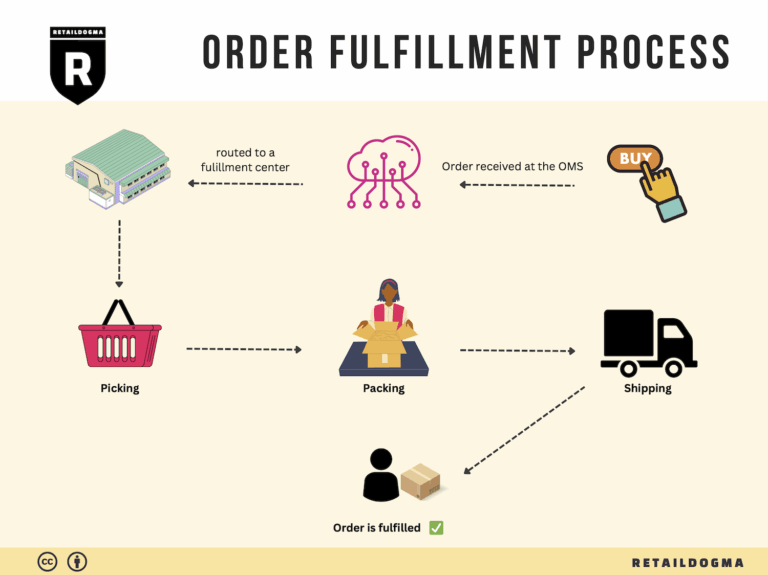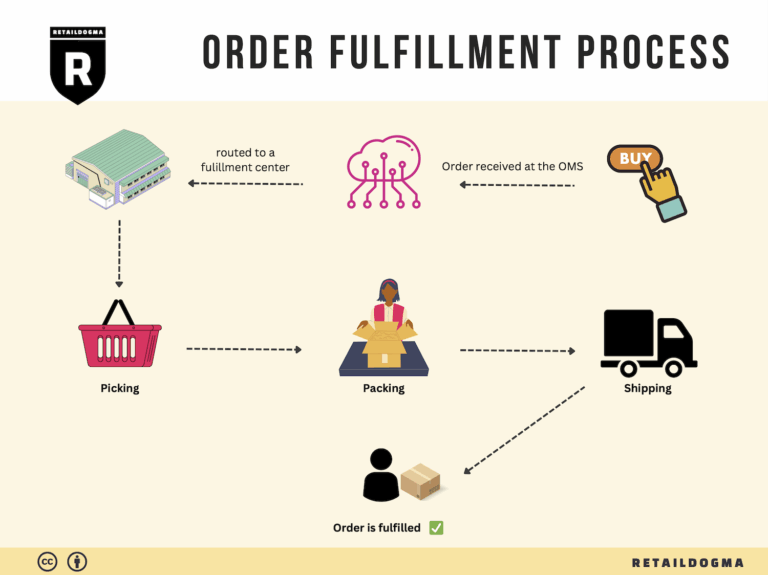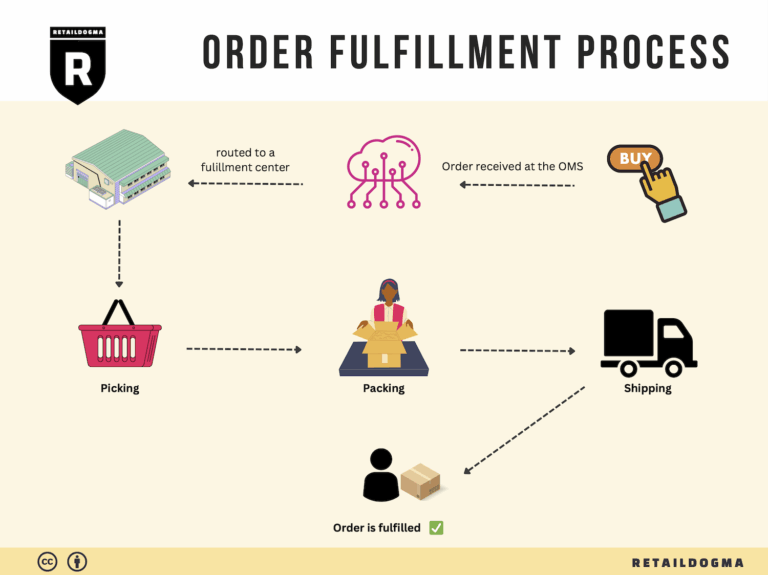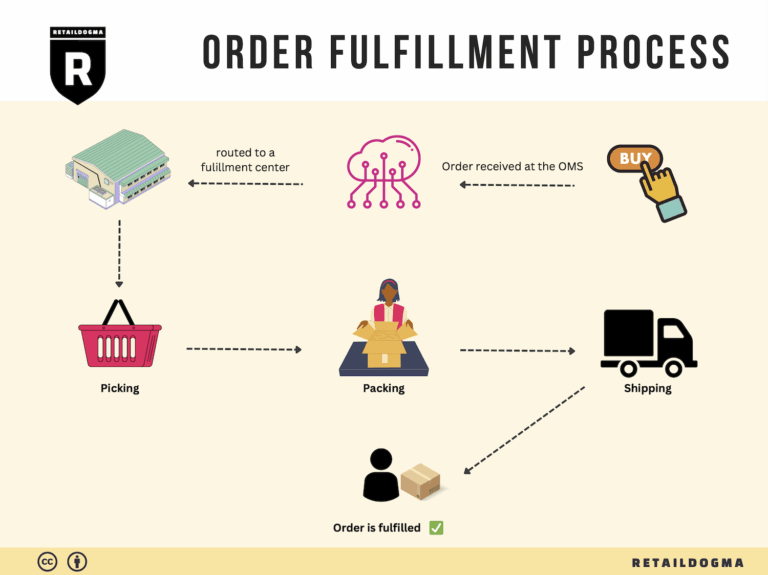Ecommerce Fulfillment Services: The Ultimate Guide (2025)
What is E-commerce Fulfillment? An Introduction for Growing Businesses
Understanding E-commerce Fulfillment
As a growing online business, you may find yourself overwhelmed with the logistics of packing and shipping orders. This is a common pain point for many e-commerce entrepreneurs. Managing inventory, fulfilling orders, and ensuring timely delivery can quickly become a daunting task that diverts your focus from scaling your business. This is where an effective e-commerce fulfillment strategy becomes crucial.
E-commerce fulfillment is the process of getting a product from your inventory into the hands of your customer. It encompasses everything from order processing and inventory management to packaging and shipping. An efficient fulfillment process not only enhances customer satisfaction through timely deliveries but also allows you to streamline operations, reduce costs, and scale your business effectively.
In this guide, we will explore various fulfillment models that can support your business as it grows. You’ll learn about third-party logistics (3PL) providers, which can take the burden of order fulfillment off your shoulders, and Fulfillment by Amazon (FBA), a popular option for those selling on Amazon’s marketplace. We will also discuss self-fulfillment for businesses that prefer to handle their logistics in-house.
Additionally, we will cover the core services typically offered by fulfillment partners, including inventory storage, order picking and packing, shipping logistics, and returns management. Understanding these services will help you determine what you need from a fulfillment provider.
Choosing the right fulfillment partner can be a pivotal decision for your business. This guide will provide insights into key factors to consider, such as location, shipping options, technology integration, and customer support. We will also touch on pricing structures, helping you understand how to evaluate costs and find a solution that fits your budget.
Ultimately, our goal is to empower you with the knowledge and tools necessary to make informed decisions about your logistics strategy. By mastering the intricacies of e-commerce fulfillment, you can enhance your operational efficiency, improve customer satisfaction, and position your business for sustainable growth. Whether you’re just starting out or looking to scale, understanding fulfillment is essential to your e-commerce success.
What You’ll Learn In This Guide
- What is E-commerce Fulfillment? An Introduction for Growing Businesses
- The Order Fulfillment Process: From ‘Buy’ Button to Customer’s Door
- Comparing Fulfillment Models: In-House vs. 3PL vs. Dropshipping
- A Deep Dive into Amazon FBA: Pros, Cons, and Who It’s For
- Core Services Offered by Fulfillment Centers
- How to Choose a Fulfillment Partner: A 6-Point Checklist
- Understanding Fulfillment Pricing: A Breakdown of Common Fees
- Frequently Asked Questions (FAQs) about Fulfillment
- Conclusion: Is Outsourcing Fulfillment the Right Move for Your Business?
- Important Disclaimer
The Order Fulfillment Process: From ‘Buy’ Button to Customer’s Door
1. Receiving Inventory
The first step in the order fulfillment process begins when products arrive at your warehouse or fulfillment center. This phase is crucial as it sets the foundation for all subsequent operations. Upon receipt, inventory is checked against purchase orders to ensure accuracy in quantity and quality. This verification process often involves the use of Stock Keeping Units (SKUs), which are unique identifiers for each product variant, allowing for efficient tracking and inventory management.
Proper receiving processes minimize errors and discrepancies, which can lead to stockouts or overstock situations that negatively impact customer satisfaction and operational efficiency. Accurate inventory records also help in forecasting demand, ensuring that your business can meet customer needs without delay.
2. Warehouse Storage
Once the inventory is verified, the next step is to store it appropriately within the warehouse. Effective warehouse storage strategies involve organizing products in a manner that maximizes space and optimizes picking efficiency. This might include using shelving systems, bins, or pallets, and employing methods such as First-In-First-Out (FIFO) or Last-In-First-Out (LIFO) based on product type and shelf life.
Warehouse layout is essential for reducing the time it takes to retrieve items during the picking process. A well-organized storage system can significantly enhance operational efficiency, reducing labor costs and speeding up order fulfillment times. Moreover, utilizing a Warehouse Management System (WMS) can assist in tracking inventory levels, locations, and movements, ensuring that your warehouse operates smoothly.
3. Order Picking
When a customer places an order, the next step is order picking—retrieving the products from storage based on the details provided in the order. This is often facilitated by a pick list, which outlines the specific items and quantities needed for each order. Efficient order picking is vital as it directly impacts the speed and accuracy of order fulfillment.
Various picking methods can be utilized, including single order picking, batch picking, or zone picking, depending on the volume and complexity of orders. The choice of method affects labor efficiency and order accuracy. Implementing technology like barcode scanners or pick-to-light systems can enhance the picking process, reducing human error and improving fulfillment speed. Ultimately, precise picking ensures that customers receive the correct items, fostering trust and satisfaction.
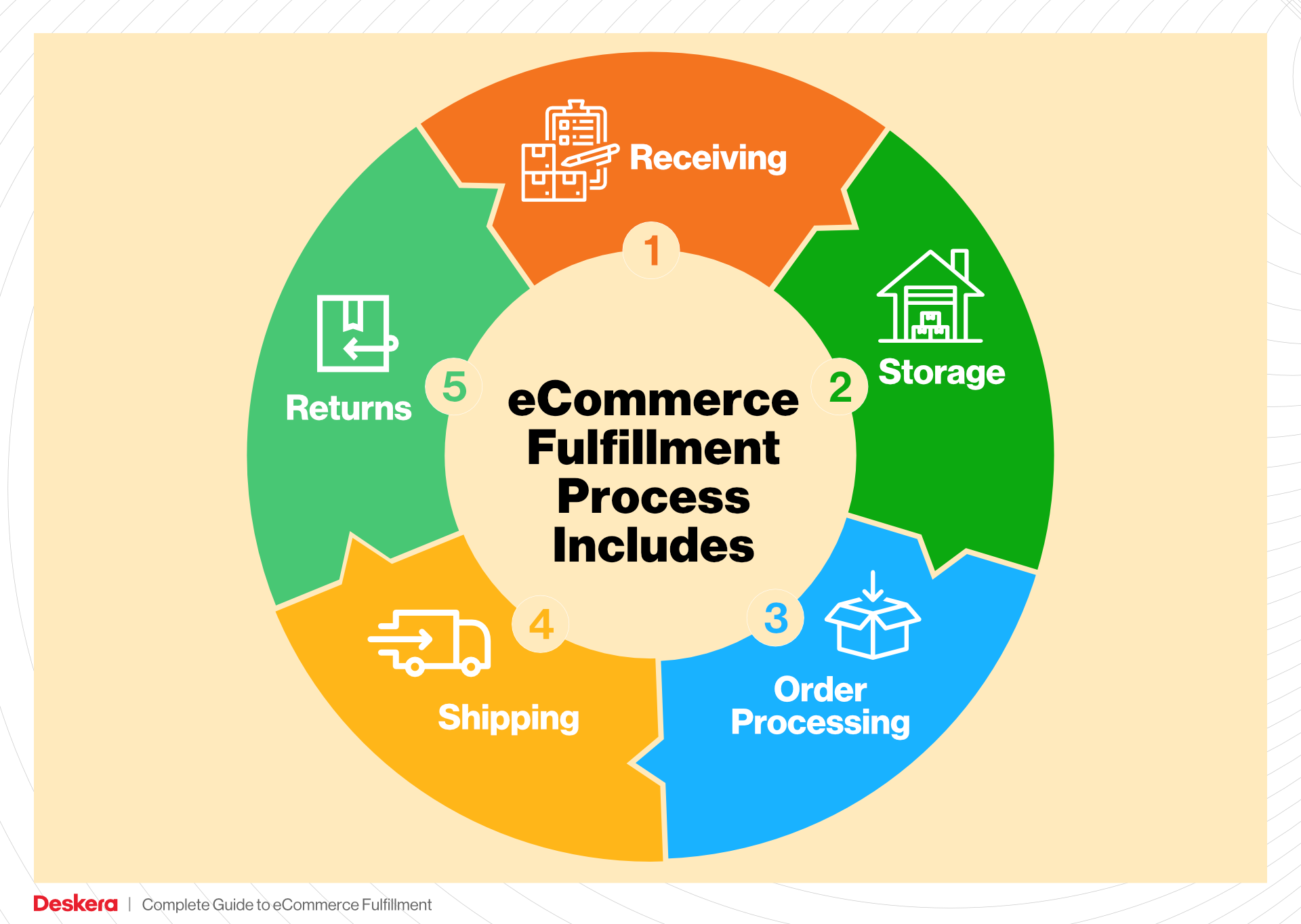
4. Order Packing
After the items have been picked, they must be packed securely for shipping. This step involves selecting appropriate packaging materials that protect products during transit while also considering cost-effectiveness. Packing slips or invoices are typically included to provide customers with details of their orders, enhancing the unboxing experience.
The packing process is critical as it not only safeguards items but also influences shipping costs. Efficient packing methods, such as using the right-sized boxes and minimizing void fill, can lead to lower shipping expenses and reduced environmental impact. Furthermore, branded packaging can enhance customer experience and brand recognition, making packing a vital aspect of the fulfillment process.
5. Shipping & Delivery
The final step in the order fulfillment process is shipping and delivery. Once orders are packed, they are labeled and handed over to shipping carriers for delivery. Timeliness in this step is paramount, as customer expectations for fast shipping continue to rise. Utilizing a robust shipping strategy that includes selecting reliable carriers and optimizing shipping routes can significantly reduce delivery times.
Additionally, providing customers with tracking information enhances transparency and improves customer satisfaction. By keeping customers informed about their order status, businesses can reduce inquiries and improve trust. Understanding shipping logistics, including international tariffs and customs regulations, is also essential for businesses looking to expand their reach globally.
In conclusion, each step of the order fulfillment process—from receiving inventory to shipping and delivery—plays a vital role in ensuring a seamless experience for customers. By focusing on efficiency, accuracy, and customer satisfaction at every stage, e-commerce businesses can scale their operations effectively and build lasting relationships with their customers.
Comparing Fulfillment Models: In-House vs. 3PL vs. Dropshipping
Fulfillment Model Comparison Table
| Model | Who Handles Inventory | Best For (Business Stage) | Key Advantage | Key Disadvantage |
|---|---|---|---|---|
| In-House Fulfillment | Business Owner/Team | Startups/Small Businesses | Full control over inventory and processes | Labor-intensive and requires significant resources |
| Third-Party Logistics (3PL) | Fulfillment Partner | Growing Businesses | Scalability and reduced operational burden | Less control over fulfillment processes and quality |
| Dropshipping | Supplier/Manufacturer | New or Niche Market Entrants | Low upfront costs and risk | Limited control over inventory, shipping, and quality |
In-House Fulfillment
In-house fulfillment refers to a model where the business manages its own inventory, packing, and shipping processes. This approach is often adopted by startups and small businesses that want to maintain direct control over their operations. By handling fulfillment internally, these businesses can ensure that their brand standards are met in packaging, quality control, and customer service. In-house fulfillment allows for greater flexibility in inventory management and the ability to respond quickly to customer demands. However, this model can be labor-intensive and may require significant investment in warehouse space, staffing, and technology for order processing. As order volume grows, maintaining efficiency and cost-effectiveness can become challenging, leading many businesses to reconsider their fulfillment strategy.
Third-Party Logistics (3PL)
Third-party logistics, or 3PL, involves outsourcing fulfillment operations to specialized logistics providers. This model is ideal for growing businesses that need to scale their operations without the overhead costs associated with managing a warehouse. 3PL providers typically operate multiple fulfillment centers strategically located to optimize shipping times and costs. By partnering with a 3PL, businesses can benefit from established logistics networks, lower shipping rates due to volume discounts, and access to advanced inventory management technologies. Additionally, using a 3PL allows businesses to focus on core activities such as marketing and product development rather than logistics. However, outsourcing fulfillment comes with a trade-off: businesses may have less control over the fulfillment process, which can impact delivery times and customer experience if not managed properly.
Dropshipping
Dropshipping is a fulfillment model where the retailer does not hold inventory but instead forwards customer orders to a supplier or manufacturer, who then ships the products directly to the customer. This approach is particularly appealing for new businesses and those entering niche markets, as it requires minimal upfront investment in inventory and reduces financial risk. Retailers can offer a wide variety of products without the burden of managing stock or warehouse operations. While dropshipping can simplify logistics, it also presents challenges. Retailers have limited control over shipping times and product quality, which can lead to customer dissatisfaction if the supplier fails to meet expectations. Additionally, reliance on suppliers can create complications in inventory management and order fulfillment, particularly during peak sales periods. As a result, businesses must carefully vet suppliers and maintain clear communication to ensure a smooth customer experience.
Conclusion
Choosing the right fulfillment model is crucial for e-commerce businesses looking to scale effectively. Each model—In-house fulfillment, 3PL, and dropshipping—offers distinct advantages and disadvantages that can significantly impact operations and customer satisfaction. By assessing their current business stage, growth aspirations, and operational capabilities, business owners can select the model that best aligns with their strategic objectives and customer needs. Whether opting for full control through in-house fulfillment, leveraging the expertise of a 3PL, or minimizing risk with dropshipping, a thoughtful approach to fulfillment can drive efficiency and enhance the customer experience, ultimately supporting business growth.
A Deep Dive into Amazon FBA: Pros, Cons, and Who It’s For
Understanding Fulfillment by Amazon (FBA)
Fulfillment by Amazon (FBA) is a logistics service provided by Amazon that enables e-commerce sellers to store their products in Amazon’s fulfillment centers. Amazon takes care of the storage, packing, shipping, and customer service for these products. This service is particularly advantageous for sellers looking to leverage Amazon’s vast logistics network and customer base.
When a customer places an order for a product fulfilled by Amazon, the process is seamless. Amazon picks, packs, and ships the product directly to the customer. Sellers benefit from Amazon’s established infrastructure, ensuring faster delivery times and improved customer satisfaction. Additionally, products fulfilled by FBA are eligible for Amazon Prime and other Amazon services, enhancing their visibility and attractiveness to potential buyers.
How FBA Works
The FBA process can be broken down into several key steps:
-
Product Preparation: Sellers prepare their products according to Amazon’s guidelines. This includes labeling, packaging, and ensuring that products are compliant with Amazon’s requirements.
-
Shipping Inventory: Once the products are ready, sellers ship their inventory to one or more of Amazon’s fulfillment centers. Amazon provides shipping labels and instructions to streamline this process.
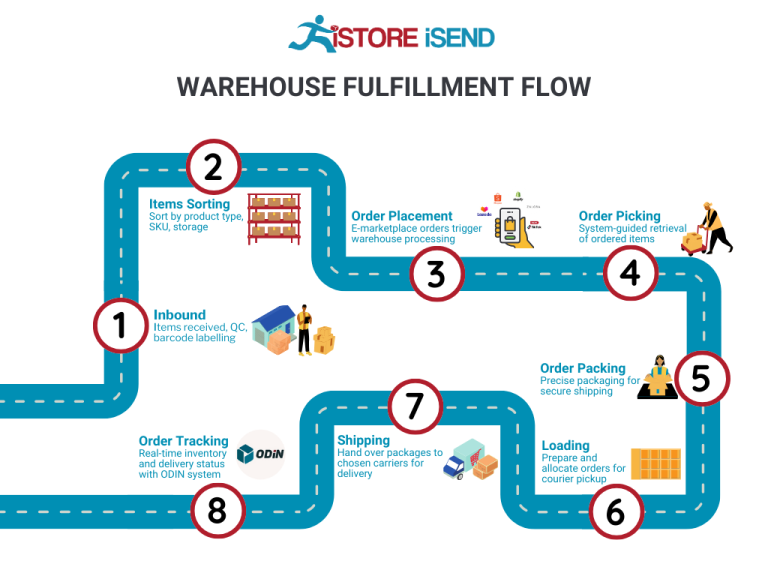
-
Storage: The products are stored in Amazon’s warehouses until an order is placed. Sellers are charged storage fees based on the space their products occupy.
-
Order Fulfillment: When a customer orders a product, Amazon takes care of picking it from the shelf, packing it, and shipping it directly to the customer. Amazon’s logistics network allows for quick shipping, often within two days for Prime members.
-
Customer Service and Returns: Amazon handles all customer inquiries, returns, and refunds for FBA products, allowing sellers to focus on other aspects of their business.
Pros of Using FBA
-
Prime Eligibility: Products fulfilled by Amazon are automatically eligible for Amazon Prime. This not only increases visibility but also attracts Prime members who prefer fast and free shipping options.
-
Customer Trust: Amazon is a trusted brand, and having your products fulfilled by Amazon can enhance your credibility. Customers are more likely to purchase from sellers using FBA due to Amazon’s reliable shipping and customer service.
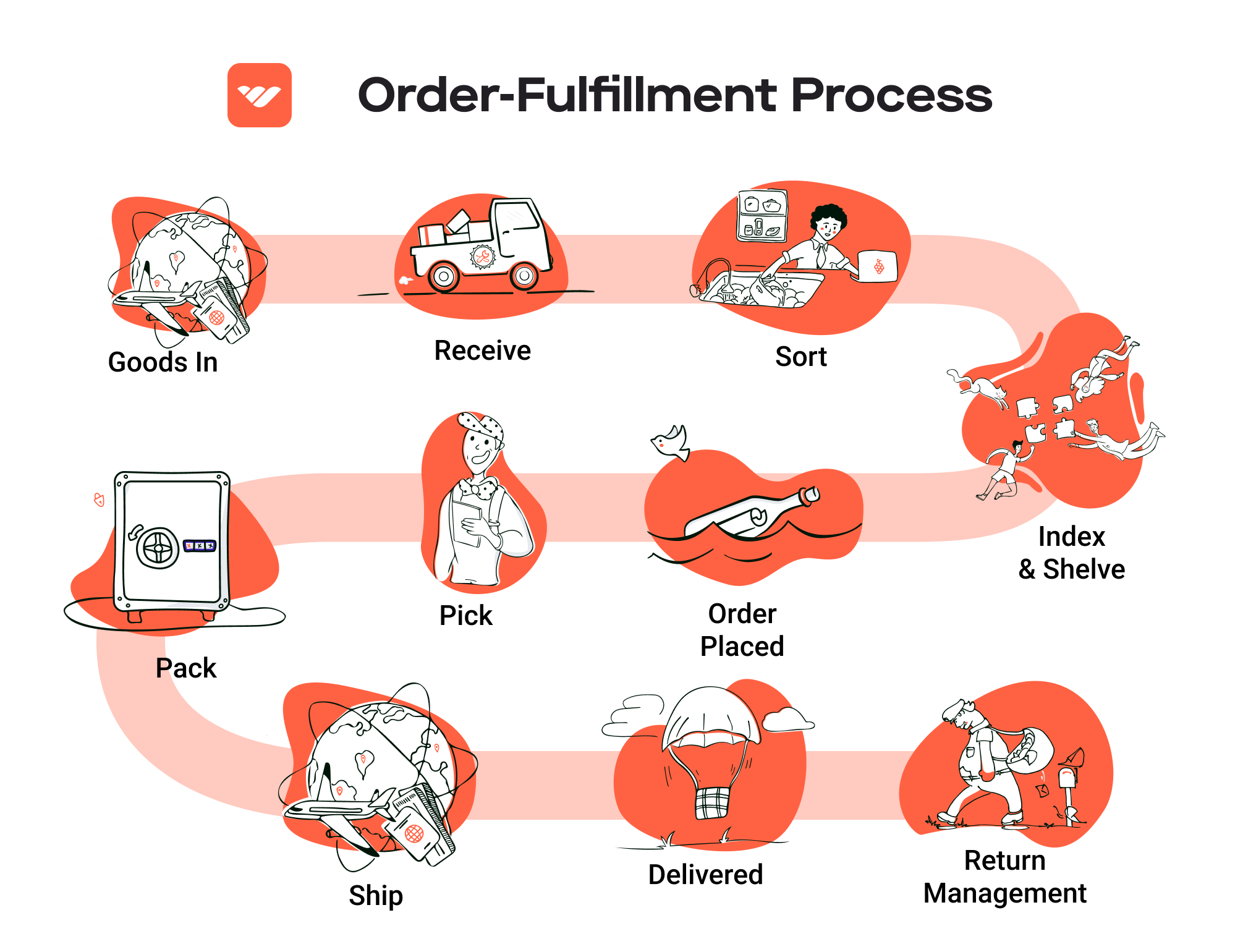
-
Multi-Channel Fulfillment: FBA allows sellers to fulfill orders from other sales channels, such as their own websites or other marketplaces, using Amazon’s logistics. This capability can streamline operations for businesses selling across multiple platforms.
-
Scalability: FBA enables sellers to scale their businesses without the need for extensive warehousing and logistics infrastructure. As order volume increases, Amazon manages the logistics, allowing sellers to focus on growth.
-
Automated Processes: FBA automates many aspects of order fulfillment, from inventory management to shipping, which can save time and reduce operational burdens for sellers.
Cons of Using FBA
-
High Fees: While FBA offers numerous benefits, it also comes with costs. Sellers face various fees, including storage fees, fulfillment fees, and additional charges for long-term storage. These can significantly eat into profit margins.
-
Strict Inventory Rules: Amazon has stringent inventory management rules. Sellers must ensure that their inventory is compliant with Amazon’s requirements, or they risk having their products removed or facing penalties.
-
Commingling Risks: FBA uses a commingling system where inventory from multiple sellers is stored together. This can lead to issues where a seller’s products may be shipped to customers instead of their own. This risk can affect brand reputation and customer satisfaction.
-
Limited Control Over Shipping: Once products are sent to Amazon, sellers have limited control over the fulfillment process. This can be problematic if there are issues with shipping or inventory management, as sellers must rely on Amazon to resolve these problems.
-
Potential for Stockouts: Relying on Amazon for fulfillment means that if inventory runs low, sellers can face stockouts, which can affect sales and ranking on the platform.
Who is FBA Best For?
Fulfillment by Amazon is particularly well-suited for:
-
Small to Medium-Sized Businesses: Sellers who want to focus on sales and marketing without managing their own logistics can benefit from FBA. It provides an easy way to scale without investing heavily in warehousing or logistics.
-
E-commerce Entrepreneurs: New entrepreneurs looking to establish a presence on Amazon can leverage FBA to gain access to Amazon’s vast customer base and trusted logistics network.
-
Sellers with High Sales Volume: Businesses that anticipate high sales volume can benefit from the efficiency and speed of FBA, allowing them to fulfill orders quickly and reliably.
-
Multi-Channel Sellers: Businesses that sell on multiple platforms can use FBA to streamline order fulfillment across all channels, allowing for better inventory management and customer service.
-
Brands Seeking Enhanced Visibility: Sellers looking to increase their product visibility through Prime eligibility and Amazon’s trusted customer service will find FBA to be an advantageous option.
In conclusion, while Fulfillment by Amazon offers a robust solution for many e-commerce sellers, it’s essential to weigh the benefits against the associated costs and risks. For those who can navigate these challenges, FBA can significantly enhance operational efficiency and customer satisfaction.
Core Services Offered by Fulfillment Centers
Inventory Management & Warehousing
Inventory management and warehousing form the backbone of effective order fulfillment. Fulfillment centers provide businesses with a space to store their products, often strategically located near key transport hubs to optimize shipping times. These centers utilize advanced inventory management systems that track stock levels in real-time, ensuring that e-commerce businesses can monitor their inventory without the hassle of managing it in-house.
Benefits:
1. Reduced Overhead Costs: By outsourcing warehousing to a fulfillment center, businesses can save on costs associated with maintaining their own storage facilities, including rent, utilities, and personnel.
2. Scalability: As an e-commerce business grows, its inventory needs can fluctuate dramatically. Fulfillment centers offer flexible storage solutions, allowing businesses to scale up or down based on demand without the burden of long-term leases.
3. Improved Accuracy: Modern inventory management systems reduce the risk of human error. Automated tracking ensures that stock levels are accurate, minimizing instances of overselling or stockouts.
Pick and Pack Services
Pick and pack services are crucial for ensuring that orders are processed efficiently. This service involves selecting items from inventory (picking) and packaging them for shipment (packing). Fulfillment centers employ specialized staff and technology to streamline this process, often using barcode scanning to ensure accuracy and speed.
Benefits:
1. Efficiency: Fulfillment centers are optimized for picking and packing, significantly reducing the time from order placement to dispatch. This efficiency leads to faster delivery times, enhancing customer satisfaction.
2. Customization: Many fulfillment centers offer customizable packing options, allowing e-commerce businesses to brand their packaging or include promotional materials. This personalization can enhance the customer experience and promote brand loyalty.
3. Error Reduction: Automated systems and trained personnel minimize the chances of picking the wrong items or making packing mistakes, which can lead to costly returns and damage to brand reputation.
Kitting and Assembly
Kitting and assembly services involve the grouping of individual products into ready-to-ship sets or kits. This is particularly useful for businesses that sell products that are frequently purchased together or require assembly before shipping. Fulfillment centers can handle this process efficiently, ensuring that kits are assembled correctly and packaged for shipping.
Benefits:
1. Enhanced Product Offerings: By creating product bundles or kits, businesses can offer customers more value, which can lead to increased sales and higher average order values.
2. Time Savings: Outsourcing kitting and assembly to fulfillment centers allows e-commerce businesses to focus on core operations, such as marketing and product development, rather than spending time on manual assembly.
3. Quality Control: Fulfillment centers often have quality control measures in place to ensure that kits are assembled correctly, which can reduce the risk of customer dissatisfaction due to incomplete or incorrect orders.
Returns Management (Reverse Logistics)
Returns management, or reverse logistics, is an essential service provided by fulfillment centers that deals with processing returned items. Effective returns management is crucial for e-commerce businesses, as it can significantly impact customer satisfaction and retention. Fulfillment centers streamline the returns process by handling inspections, restocking, and managing refunds or exchanges.
Benefits:
1. Customer Satisfaction: A well-managed returns process can enhance customer experience, making it easier for them to return products if necessary. This can build trust and encourage repeat purchases.
2. Cost Efficiency: Fulfillment centers can help businesses manage the costs associated with returns, including restocking and shipping logistics, thereby minimizing losses from returned merchandise.
3. Data Insights: Fulfillment centers can provide valuable insights into return trends, helping businesses understand product performance and customer preferences. This data can inform future product development and inventory decisions.
Conclusion
Utilizing the core services offered by fulfillment centers can significantly enhance the operational efficiency of e-commerce businesses. By outsourcing inventory management, pick and pack services, kitting and assembly, and returns management, businesses can focus on scaling their sales and improving customer satisfaction. These services not only streamline logistics but also provide valuable insights and flexibility, enabling e-commerce owners to adapt to changing market demands effectively.
How to Choose a Fulfillment Partner: A 6-Point Checklist
Location & Warehouse Network
Importance:
The geographical location of your fulfillment partner’s warehouses can significantly impact shipping times and costs. Ideally, your partner should have multiple warehouses strategically located near your key customer bases to reduce transit times and shipping expenses.
Questions to Ask:
– How many warehouses do you operate, and where are they located?
– Can you provide shipping time estimates for my primary markets?
– What are your shipping options for domestic and international orders?
– How do you manage inventory across multiple locations?
Technology & Integrations
Importance:
In today’s digital age, the technology that a fulfillment partner uses is crucial for seamless operations. A robust fulfillment management system (FMS) can streamline order processing, inventory management, and shipping logistics. Additionally, integration with your existing e-commerce platform is essential for real-time data synchronization.
Questions to Ask:
– What type of fulfillment management system do you use?
– Can your system integrate with my e-commerce platform (e.g., Shopify, WooCommerce)?
– Do you offer real-time inventory tracking and order status updates?
– What reporting capabilities do you provide to monitor performance and inventory levels?
Specializations (e.g., cold storage, oversized items)
Importance:
Different businesses have unique requirements based on their product types. If you sell perishables, fragile items, or oversized products, you’ll need a partner with the right capabilities to handle these specialized needs. A partner’s expertise in specific niches can enhance efficiency and ensure product integrity.
Questions to Ask:
– Do you have specialized facilities for handling certain product types (e.g., temperature-controlled storage)?
– What measures do you take to ensure the safe handling of fragile or oversized items?
– Can you accommodate seasonal fluctuations in product demand?
– How do you manage returns for specialized products?
Scalability & Capacity
Importance:
As your business grows, your fulfillment needs will evolve. A good fulfillment partner should be able to scale with your business, whether that means increasing warehouse space, managing larger order volumes, or expanding into new markets. Assessing their capacity for growth is essential to avoid disruptions.
Questions to Ask:
– What is your current capacity for order fulfillment, and how do you handle peak seasons?
– How do you manage inventory levels to ensure timely order fulfillment during high-demand periods?
– Can you provide examples of how you have scaled with other clients?
– What are your plans for future growth, and how will that impact your services?
Pricing and Contracts
Importance:
Understanding the pricing structure is critical to maintaining profitability. It’s essential to evaluate whether the costs align with your budget and how they compare to other fulfillment partners. Additionally, be clear about contract terms, including any hidden fees or minimum order requirements.
Questions to Ask:
– What is your pricing model (e.g., per order, per item, or monthly fees)?
– Are there any additional costs for services such as storage, packaging, or returns?
– Do you require a long-term contract, and what are the terms for terminating the agreement?
– Can you provide a detailed breakdown of all costs associated with your services?
Customer Support & Reviews
Importance:
Strong customer support is vital for addressing any issues that may arise during the fulfillment process. Look for a partner that offers reliable support channels and has a track record of positive customer experiences. Reviews and testimonials can provide insight into their reliability and service quality.
Questions to Ask:
– What support channels do you offer (e.g., phone, email, chat)?
– What are your average response times for customer inquiries?
– Can you provide references or case studies from existing clients?
– How do you handle issues related to order fulfillment and customer complaints?
Conclusion
Choosing the right fulfillment partner is a pivotal decision that can influence your e-commerce business’s efficiency and customer satisfaction. By carefully evaluating potential partners through this checklist, you can ensure that you select a fulfillment provider that aligns with your business needs and supports your growth ambitions. Remember, the right partner not only enhances your logistics but also strengthens your overall brand promise to customers.
Understanding Fulfillment Pricing: A Breakdown of Common Fees
Initial Setup Fees
When partnering with a fulfillment center, the first expense you may encounter is the initial setup fee. This fee typically covers the costs associated with onboarding your business into their system. It may include the integration of your e-commerce platform with the fulfillment center’s software, inventory setup, and any necessary training for your team.
These fees can vary significantly based on the complexity of your operations and the fulfillment provider. Some companies may charge a flat fee, while others might base it on the number of SKUs or the volume of inventory you plan to send. It’s essential to clarify what is included in this fee to avoid unexpected costs later on.
Receiving Fees
Receiving fees are charged when the fulfillment center accepts and processes your inventory. This fee covers the labor and resources needed to inspect, count, and store your products upon arrival. The calculation of receiving fees can depend on several factors, including:
- Volume of Inventory: A higher number of items may incur a higher fee due to the additional handling required.
- Complexity of Products: If your products require special handling (e.g., fragile items), this could lead to increased costs.
- Packaging Requirements: If your items need to be unpacked or repackaged before storage, this can also add to the receiving fees.
Businesses should inquire about how these fees are structured and whether they are charged on a per-pallet or per-item basis.
Storage Fees (per pallet/bin)
Storage fees are charged for the space your inventory occupies within the fulfillment center. These fees can be billed on a monthly basis and are often calculated per pallet, bin, or cubic foot. The following factors influence storage fees:
- Type of Storage: Standard storage may be less expensive than climate-controlled storage for sensitive products.
- Duration of Storage: Long-term storage fees may apply if inventory remains unsold for an extended period, often defined as over 30 or 60 days.
- Seasonality: During peak seasons, such as the holidays, storage fees may increase due to higher demand for warehouse space.
Understanding how storage fees are calculated will help you manage inventory turnover and minimize costs.
Pick & Pack Fees (per item/order)
Pick and pack fees are charged for the labor involved in selecting items from inventory (picking) and preparing them for shipment (packing). This fee typically varies based on:
- Number of Items per Order: More items in a single order can increase the pick and pack fee due to the additional time and resources required.
- Complexity of Packing: If your products require special packing materials or methods, this could lead to higher fees.
- Order Volume: Some fulfillment centers offer tiered pricing, where the per-order fee decreases as the volume of orders increases.
It’s crucial to discuss these fees with potential fulfillment partners to understand how they align with your order fulfillment needs.
Shipping Fees
Shipping fees are one of the most significant expenses associated with fulfillment. These costs depend on several factors, including:
- Shipping Carrier: Different carriers have varying rates based on service levels (e.g., standard, expedited).
- Package Size and Weight: Heavier and larger packages typically incur higher shipping costs.
- Destination: Shipping to remote areas can be more expensive than shipping to urban locations.
- Shipping Method: Options like express shipping come at a premium compared to standard delivery.
Many fulfillment centers negotiate shipping rates with carriers, which can significantly reduce costs for your business. It’s worth asking about these arrangements and whether they can pass on any savings to you.
Tips for Getting an Accurate Quote
-
Provide Detailed Information: When requesting quotes, be as specific as possible about your product types, volumes, and shipping needs. This information helps fulfillment centers give you the most accurate pricing.
-
Ask About Hidden Fees: Ensure you understand all potential fees, including those for returns, inventory management, and additional services.
-
Evaluate Multiple Providers: Don’t settle for the first quote you receive. Compare offers from different fulfillment centers to find the best balance between cost and service quality.
-
Consider Contract Terms: Look for flexibility in contract terms, especially regarding volume changes, which may affect pricing.
-
Utilize Technology: Leverage tools and software provided by fulfillment centers to streamline your operations and potentially reduce costs through automation.
By being informed and proactive, you can effectively manage fulfillment pricing and enhance your e-commerce operations.
Frequently Asked Questions (FAQs) about Fulfillment
1. What is order fulfillment in e-commerce?
Order fulfillment in e-commerce refers to the entire process of receiving, processing, and delivering customer orders. It encompasses inventory management, picking and packing products, and shipping them to the end customer. Effective fulfillment is critical for customer satisfaction and can significantly impact your business’s reputation.
2. What’s the difference between a warehouse and a fulfillment center?
While both warehouses and fulfillment centers are used to store inventory, their purposes differ. A warehouse primarily serves as a storage facility where goods are kept until needed. In contrast, a fulfillment center is specifically designed to process orders quickly and efficiently, focusing on picking, packing, and shipping products directly to customers.
3. What is a third-party logistics provider (3PL)?
A third-party logistics provider (3PL) is a company that offers logistics services to businesses, including warehousing, fulfillment, and shipping. By outsourcing these functions to a 3PL, e-commerce businesses can focus on core activities like marketing and product development while benefiting from the expertise and resources of their logistics partner.
4. How much do fulfillment services cost?
Fulfillment service costs can vary widely based on several factors, including the volume of orders, the types of products being shipped, and the specific services required (such as packing, shipping, and returns management). Typically, costs include storage fees, per-order fulfillment fees, and shipping fees. It’s essential to request quotes from multiple providers to find a solution that fits your budget.
5. How do I choose the right fulfillment partner?
Choosing the right fulfillment partner involves evaluating your business needs, order volume, and the types of products you sell. Consider factors such as shipping speed, location of fulfillment centers, technology integration capabilities, and customer service quality. It can also be beneficial to read reviews and ask for case studies from potential partners.
6. What are the benefits of using a fulfillment center?
Using a fulfillment center offers several advantages, including faster shipping times, reduced operational costs, and improved inventory management. By outsourcing fulfillment, businesses can scale more efficiently, access advanced logistics technology, and enhance customer satisfaction through reliable delivery services.
7. Can I manage my own fulfillment?
Yes, many small businesses manage their own fulfillment, especially when they have a limited number of orders. However, as your business scales, handling fulfillment in-house can become challenging due to increased order volume, complexity, and the need for efficient shipping. It’s crucial to assess your growth projections and consider whether outsourcing may be more beneficial.
8. How does dropshipping work in the context of fulfillment?
Dropshipping is a fulfillment method where the retailer does not hold inventory. Instead, when a customer places an order, the retailer forwards the order to a supplier or manufacturer, who then ships the product directly to the customer. This model allows businesses to sell products without upfront inventory costs but can lead to less control over shipping times and customer service.
9. What technologies are essential for effective order fulfillment?
Effective order fulfillment relies on several technologies, including inventory management systems, order management software, and shipping solutions. These tools help track inventory levels, streamline order processing, and optimize shipping routes, ultimately enhancing efficiency and customer satisfaction.
10. How do I handle returns in my fulfillment process?
Handling returns effectively is crucial for maintaining customer trust. A good fulfillment partner should offer a returns management system that simplifies the process for both you and your customers. This typically includes providing return shipping labels, tracking returns, and managing restocking. Ensure that your fulfillment partner has a clear returns policy that aligns with your business’s needs.
Conclusion: Is Outsourcing Fulfillment the Right Move for Your Business?
Assessing the Value of Outsourcing Fulfillment
Outsourcing your fulfillment process can be a transformative decision for your e-commerce business. The key benefits of partnering with a fulfillment service include significant time savings, enhanced scalability, and access to specialized expertise. By entrusting the logistics of order fulfillment to a dedicated provider, you can focus on your core business activities—such as marketing, product development, and customer engagement—without the burden of managing inventory, packing, and shipping.
With the right fulfillment partner, you gain the ability to scale operations seamlessly. Whether you’re experiencing seasonal spikes in demand or planning to expand your product line, a proficient fulfillment service can adjust to your changing needs. This flexibility is crucial in today’s fast-paced e-commerce environment, where customer expectations for quick delivery and efficient service are higher than ever.
Moreover, fulfillment providers bring invaluable industry expertise. They have established relationships with carriers, enabling them to negotiate better shipping rates and delivery times. Their experience in handling logistics can lead to improved order accuracy and customer satisfaction, further enhancing your brand reputation.
However, the success of outsourcing fulfillment hinges on selecting the right partner. Not all fulfillment services are created equal; their capabilities, technology, and customer service levels can vary widely. Conduct thorough research and due diligence to find a provider that aligns with your business goals and can support your growth trajectory.
Call to Action
To determine if outsourcing fulfillment is the right move for your business, conduct an audit of your current shipping processes. Evaluate the time and resources you allocate to fulfillment and consider whether a dedicated partner could enhance efficiency and support your growth. By making an informed choice, you can position your business for success in the competitive e-commerce landscape.
Important Disclaimer
⚠️ Important Disclaimer
The information in this guide is for educational purposes. Fulfillment services, pricing, and platform features change frequently. Always conduct your own due diligence and consult with providers directly before making business decisions.

